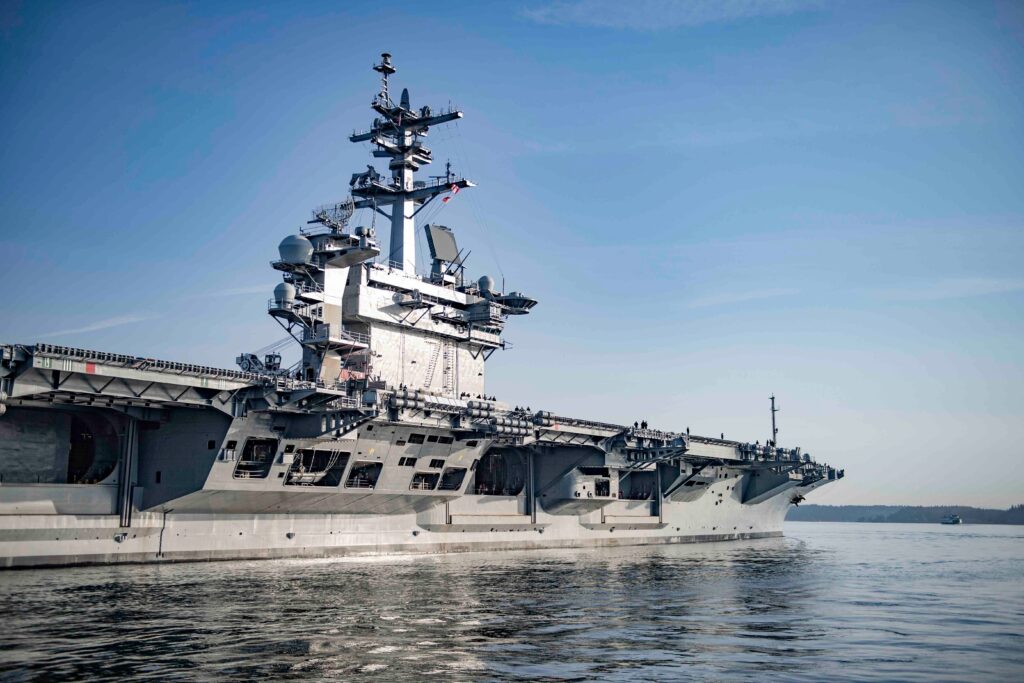
*****
WASHINGTON — Building two aircraft carriers in a single procurement is economical for the Navy not only in terms of economic order quantities but also in mitigating the effects of inflation.
Rick Giannini, chairman of the Aircraft Carrier Industrial Base Coalition, an organization of suppliers of components and materials to the building of aircraft carriers, told Seapower in a March 20 interview that the dual procurement of CVN 80 and CVN 81 saved the Navy an estimated $4 billion, and probably considerably more than that because of advance order of materials and components before the increased inflation of the past two years.
Giannini said that a recent survey of the suppliers showed that inflation is a major concern of the suppliers.
“Any one of the suppliers that received those advance procurement funds in the two-carrier order “removed [inflation] from the equation,” said Giannini, who also is the former CEO of Milwaukee Valve, one of the suppliers of components to aircraft carriers. “I know our company alone was able to procure two shipsets worth of products, locked in the prices, paid in advance with those funds because of the procurement funding in advance. The value was tremendous compared to prior prices. When you evaluated against what the inflationary cost of those products would be, if we were buying them today, it’s a tremendous advantage.”
Giannini said that with the current two-ship buy, the suppliers that don’t have advance funding “are struggling with inflationary factors and, like the rest of the country, many of us are struggling to keep and hire competent folks.”
“We are focused right now on advocating for the next two carriers [CVN 82 and 83] and the funding for the current carriers,” he said. “We continue to talk about stability and predictability. What that really boils down to is the simple message: 2-3-4, which is two carriers with a minimum three-year advance planning funding and built at four-year centers.
“If we can continue with that it will be a major advantage to our Navy, as it has been for [CVNs] 80 and 81,” he said. “The two-year buy is going to be a major value to the Navy and the shipyards.
Giannini also pointed out that the mid-life Refueling and Comprehensive Overhauls (RCOH) of aircraft carriers “are a critical part of the industrial supply base. It provides a lot of opportunity for us and it’s a critical part of the whole program, keeping carriers in service.
“Knowing the RCOH is going to happen is always a good thing — exactly which parts they need to complete that carrier overhaul [are] a lot less known quantities than the original build,” he said. “That always puts a little more pressure on the industrial base. Knowing that it’s going to happen is critical.
The ACIBC includes 2,000 suppliers across 44 states and 276 congressional districts.
A recent survey showed that 97% of the suppliers agreed that an increase in centers of carrier procurement from four to five years would negatively impact their business.
“The supply base has really stepped up and thrived on this last buy for [CVNs] 80 and 81 and [is] performing at a much better level than we have in the past, particularly compared to the first two carriers [CVNs 78 and 79],” Giannini said. “It puts inflation at bay, which is a top concern.”
The stability of procurement also helps suppliers hire and retain workers with critical skills, he said.
“Having the advance funding does allow us to be as efficient as possible in building and procuring the materials,” said Lisa Papini, president and CEO of Dante Valve and currently ACIBC vice chair, who is succeeding Giannini as chair and was present for the interview.






